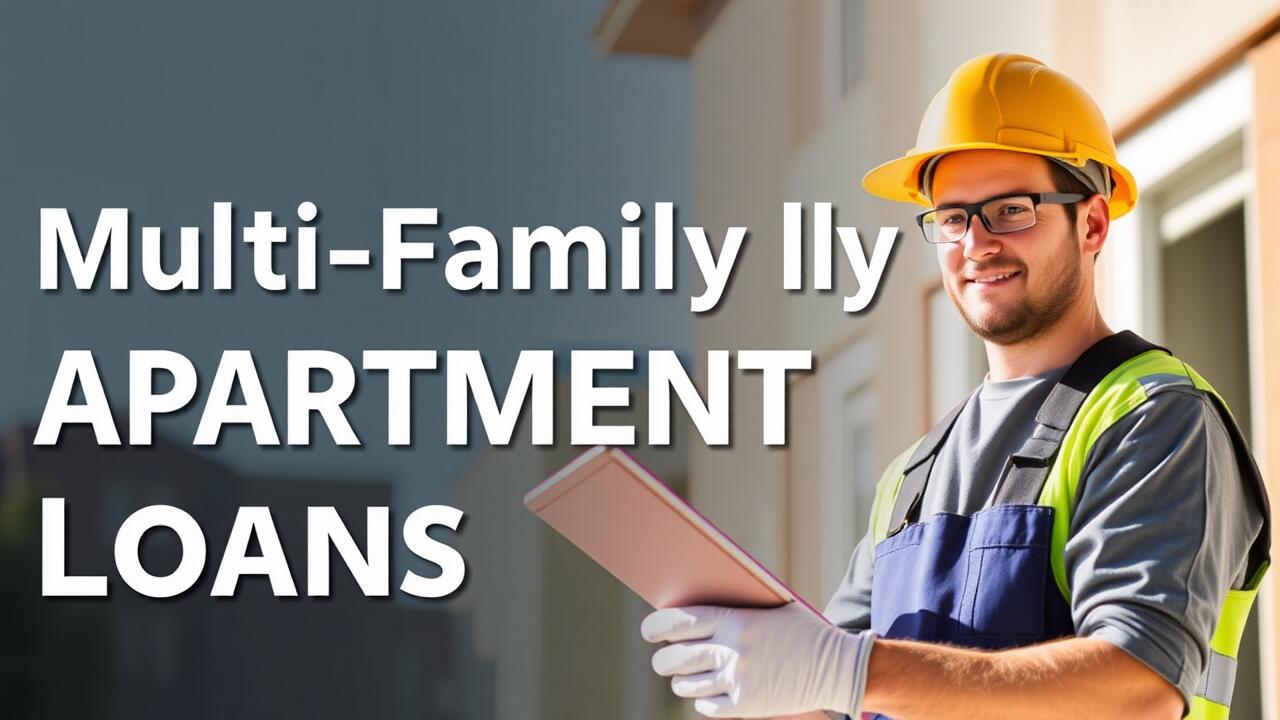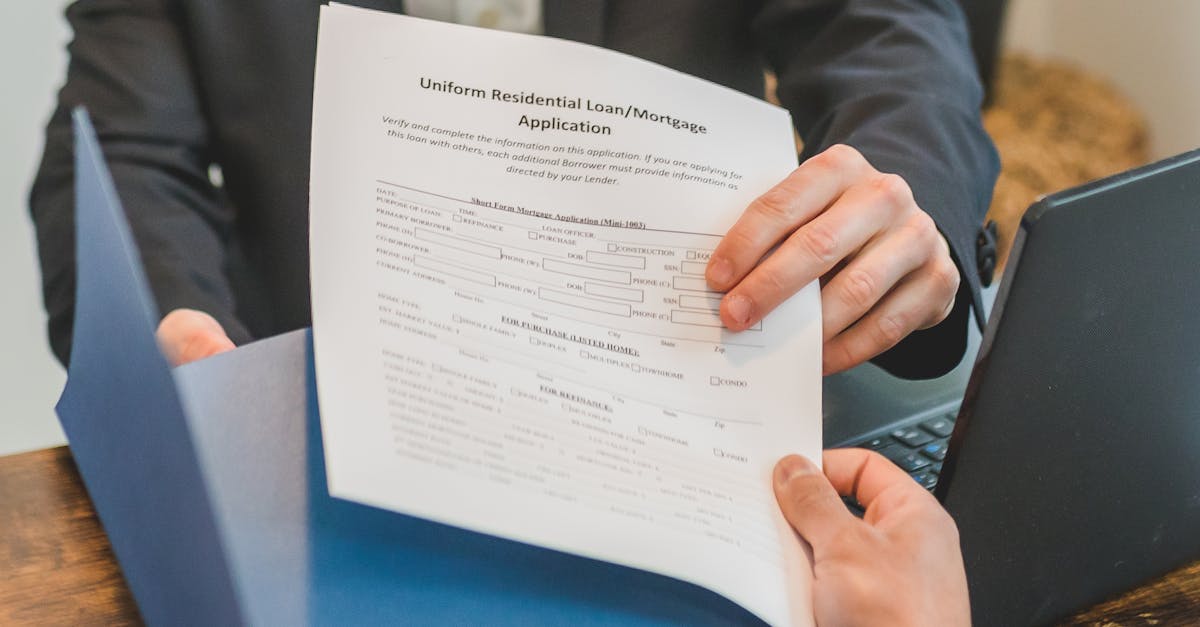
Table Of Contents
Common Uses of Multi-Family Loans
Multi-Family Apartment Loans serve various purposes, primarily designed for investors looking to acquire or renovate residential properties with multiple units. One of the most common uses includes property acquisition, allowing buyers to purchase existing multi-family buildings. Investors leverage these loans to secure favorable financing options, facilitating the transition into rental management.
Another significant use of Multi-Family Apartment Loans is for property renovation or improvement. Investors often acquire older properties requiring updates to attract tenants or increase rental income. These loans provide necessary funds for repairs, modernization, and enhancements, ultimately contributing to the property's overall value and appeal in the rental market.
Property Acquisition and Renovation
Multi-Family Apartment Loans are often utilized for property acquisition, allowing investors to purchase buildings with multiple units. This type of financing is tailored to support the unique needs of buyers looking to expand their real estate portfolios. The ability to finance larger properties helps investors tap into rental income streams, which can be a significant return on investment. Additionally, the potential for increased cash flow sets the stage for long-term financial success.
Renovation of existing multi-family properties is another common use for these loans. Investors frequently seek to improve the condition of units to attract higher-paying tenants or increase overall property value. Renovations might include updating interiors or enhancing exterior appeal, which can lead to higher occupancy rates. Multi-Family Apartment Loans provide the necessary capital to undertake these projects, enabling owners to create a more attractive and profitable rental environment.
Interest Rates and Terms
Interest rates for multi-family apartment loans can vary widely based on several factors, including the borrower’s creditworthiness, market conditions, and the specific characteristics of the property. Lenders often offer competitive rates to attract investors in this sector, as multi-family properties typically provide a steady income stream through rent. Borrowers might find fixed-rate options appealing for the stability they provide, while adjustable-rate mortgages may offer lower initial payments.
The terms of multi-family apartment loans also differ significantly. Loan durations can range from a few years to several decades depending on lender policies and borrower preferences. Generally, a longer loan term allows for lower monthly payments, which can be advantageous for investors looking to maximize cash flow. Prepayment penalties may apply, so understanding the full structure of the loan is crucial when making decisions about financing.
How Loan Structures Vary
Multi-Family Apartment Loans come in various structures, reflecting the diverse needs of borrowers. Conventional loans, often fixed-rate, are popular for their predictability and stability. These loans generally offer terms ranging from 15 to 30 years, allowing landlords to manage cash flow effectively.
On the other hand, alternative financing options such as bridge loans and hard money loans may cater to investors looking for short-term capital. These types often come with higher interest rates but provide quick access to funds, making them attractive for urgent property acquisitions or renovations. Each structure serves a unique purpose, giving borrowers flexibility based on their investment strategy and immediate financial requirements.
Challenges in Securing Multi-Family Loans
Securing multi-family loans can present a range of challenges for prospective borrowers. Lenders often have stringent requirements due to the greater risk associated with financing multi-family properties. Credit scores, debt-to-income ratios, and property appraisals are scrutinized closely. Borrowers might find themselves needing to provide extensive documentation to prove their ability to manage multiple rental units. This process can be particularly daunting for first-time investors who may not be familiar with the financial landscape.
Another potential obstacle in obtaining multi-family apartment loans is the fluctuating market conditions. Economic downturns can lead to increased lending criteria, resulting in tighter loan structures and reduced availability of funds. In some cases, lenders may require a larger down payment or impose higher interest rates based on the current market situation. These factors can significantly impact a borrower’s financing options and overall potential for investment success.
Potential Obstacles Borrowers Face
Securing Multi-Family Apartment Loans can present several obstacles for borrowers. High debt-to-income ratios often disqualify potential applicants, even if they have solid financial backgrounds. Lenders typically scrutinize the property’s income potential, which can complicate financing for those new to real estate investment. Many lenders also impose stringent requirements based on the borrower’s credit profile, affecting approval chances.
Borrowers may encounter challenges related to property appraisals as well. If the appraised value falls below the expected amount, securing the necessary financing becomes more difficult. Additionally, fluctuating interest rates can impact loan affordability, making it essential for borrowers to time their applications strategically. The complexities of multi-family units, including varying tenant risks and maintenance issues, add another layer of difficulty in obtaining loans.
FAQS
What is a multi-family loan?
A multi-family loan is a type of financing specifically designed for the purchase or refinancing of residential properties that contain multiple units, such as apartment buildings or duplexes.
What are the common uses of multi-family loans?
Multi-family loans are commonly used for property acquisition, renovations, and refinancing existing multi-family properties to improve cash flow or access equity.
How do interest rates and terms for multi-family loans differ from single-family loans?
Interest rates and terms for multi-family loans can vary widely depending on factors such as the property's location, the borrower's creditworthiness, and the lender's policies. Generally, multi-family loans may have slightly higher interest rates due to the increased risk associated with multiple tenants.
What challenges might borrowers face when securing a multi-family loan?
Borrowers may encounter challenges such as higher credit score requirements, larger down payment expectations, and the need for detailed financial documentation, including income and expense statements for the property.
Can I use a multi-family loan to purchase a property with both residential and commercial units?
Yes, some lenders offer multi-family loans for properties that include both residential and commercial units, but the terms and eligibility may vary depending on the lender and the ratio of residential to commercial space.





